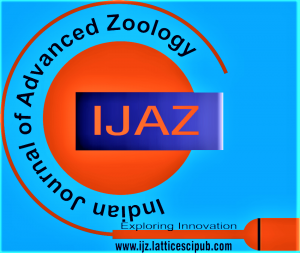![]()
Ants as a Model of Preparedness, Mitigation, and Recovery in Disaster Risk Reduction
Ebormi S. Langshiang1, Sudhanya Ray Hajong2, Ambiangmiki S. Langshiang3
1Ebormi S. Langshiang, Department of Zoology, North Eastern Hill University, Meghalaya, India.
2Sudhanya Ray Hajong, Department of Zoology, North Eastern Hill University, Meghalaya, India.
3Ambiangmiki S. Langshiang, Research Student, Meghalaya, India.
Manuscript received on 01 September 2025 | First Revised Manuscript received on 29 September 2025 | Second Revised Manuscript received on 09 October 2025 | Manuscript Accepted on 15 October 2025 | Manuscript published on 30 October 2025 | PP: 8-11 | Volume-5 Issue-2, October 2025 | Retrieval Number: 100.1/ijz.B292505021025 | DOI: 10.54105/ijz.B2925.05021025
Open Access | Ethics and Policies | Cite | Zenodo | OJS | Indexing and Abstracting
© The Authors. Published by Lattice Science Publication (LSP). This is an open-access article under the CC-BY-NC-ND license (http://creativecommons.org/licenses/by-nc-nd/4.0/)
Abstract: Disaster Risk Reduction (DRR) necessitates systems that are proactive, flexible, and community-focused. Nature provides excellent examples of such systems, particularly the social behaviour of ants. This research examines how ants exemplify the four fundamental components of disaster risk reduction (DRR): mitigation, preparedness, response, and recovery. Ant colonies employ risk-reduction tactics, including structural planning, resource management, division of labour, and cooperative recovery, to exhibit effective and sustainable disaster management procedures. By researching ant behaviour using a catastrophe risk reduction paradigm, the paper provides valuable insights into how biomimicry might be integrated into human disaster preparedness and resilience.
Keywords: Ant Behaviour, Disaster Risk Reduction (DRR), Mitigation, Preparedness, Response · Recovery, Biomimicry, Resilience, Social Insects, Nature-Based Solutions.
Scope of the Article: Animal Behaviour
